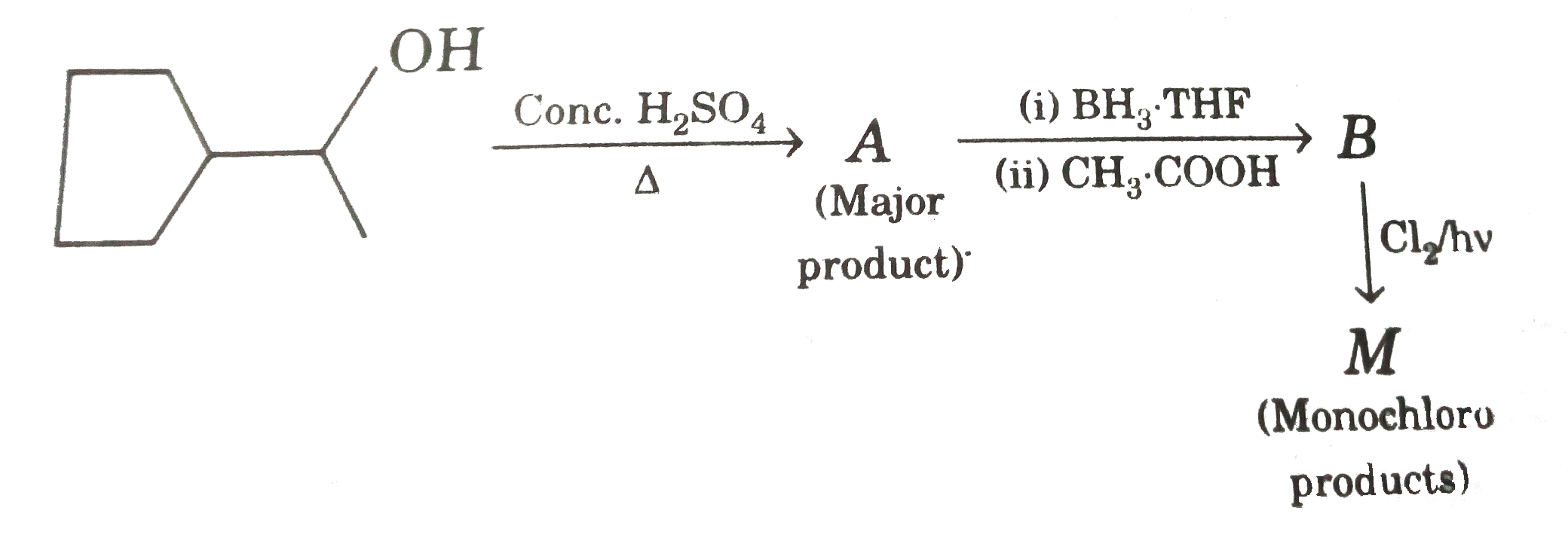In an SN2 substitution reaction of the type R−Br+Cl−DMF−−→R−Cl+Br−. Which one of the following has the highest relative rate? Solution in Malayalam
CH3−CH2−CH2Br
CH3−CH∣CH3−CH2Br
CH3−CH3∣C∣CH3−CH2Br
CH3CH2Br
The correct Answer is:D
The relative reactivity of alkyl halides towards SN2 reactions is as follows: 1∘>2∘>3∘.
However, if the primary alkyl halide or the nucleophile/base is sterically hindered the nucleophile will have difficulty to getting the back side of the α-carbon as a result of this, the elimination product will be predominant. Here, CH3CH2Br is the least hindered, hence it has the highest relative rate towards SN2 reaction.
Topper's Solved these Questions
- BOOK - BRILLIANT PUBLICATIONCHAPTER - ISOMERISM AND REACTION MECHANISMEXERCISE - LEVEL - III8videos
ISOMERISM AND REACTION MECHANISM
- BOOK - BRILLIANT PUBLICATIONCHAPTER - ISOMERISM AND REACTION MECHANISMEXERCISE - LEVEL - III (Multiple choice answer type)15videos
ISOMERISM AND REACTION MECHANISM
- BOOK - BRILLIANT PUBLICATIONCHAPTER - ISOMERISM AND REACTION MECHANISMEXERCISE - LEVEL - III (Linked Comprehension Type) (Paragraph III )3videos
ISOMERISM AND REACTION MECHANISM
- BOOK - BRILLIANT PUBLICATIONCHAPTER - HYDROGENEXERCISE - LEVEL -III ( Linked Comprehension Type)8videos
HYDROGEN
- BOOK - BRILLIANT PUBLICATIONCHAPTER - ORGANIC CHEMISTRY : SOME BASIC PRINCIPLES - PART I (NOMENCLATURE) EXERCISE - LEVEL-III45videos
ORGANIC CHEMISTRY : SOME BASIC PRINCIPLES - PART I (NOMENCLATURE)
Similar Questions
Equal amount of an RCl(C4H9Cl) is reacted at the same temperature with equal volume of 0.2 Mand 0.4M. solution of KOH, respectively, in two separate experiments. The time taken for the reaction of 50% of (C4H9Cl) was found to be same, the alkyl halide is:
02:21View SolutionWhich of the following are S2N reactions?
04:22View SolutionWhich of the following is most basic?
03:53View SolutionThe volume of 10 volume H2O2, solution that decolourises 200 ml of 2NKMnO4, solution in acidic medium is:
03:53View SolutionGive the IUPAC name of the following compound:
 02:21View Solution
02:21View SolutionIn a SN2 substitution reaction of the type
R−Br+Cl−DMF−−→R−Cl+Br+
which one of the following has the highest relative rate?03:46View Solution
A on reaction with Br-Cl gives :04:20View SolutionIn a SN2 substitution reaction of the type
R−Br+Cl−DMF−−→R−Cl+Br−
Which one of the following has the highest relative rate?View SolutionIn a SN2 substitution reaction of the type
R−Br+Cl−DMF−−→R−Cl+Br−
Which one of the following has the highest relative rate?02:42View SolutionIn a S_(N)2 substitution reaction of the type R-Br+Cl^(-) overset(DMF)to R-Cl+Br^(-) which one of the following has thehighest relative rate?
04:17View SolutionIdentify the halogen (F, Cl, Br or I).
which has the highest electronegativity,02:02View Solutionएक SN2 प्रतिस्थापन अभिक्रिया R−Br+Cl−DMF−−→R−Cl+Br− में निम्नलिखित में से किसकी सापेक्षिक दर उच्चतम है
01:20View SolutionIn a S_(N)2 substitution reaction of the type R-Br+Cl^(-) overset(DMF)to R-Cl+Br^(-) , which of the following has the highest reactivity rate?
04:20View SolutionIn a S_(N)2 substitution reaction of the type R-Br+Cl^(-)overset(DMF)rarr R-Cl+Br^(-) which one of the following has the highest relative rate ?
02:02View SolutionIn a nuleophilic substitution reaction : R-Br + Cl^(-) overset(DMF)(to) R-Cl + Br^(-) , which one of the following undergoes complete inversion of configuration ?
View SolutionIn the reaction, R – Br + Cl rarr R-Cl + Br^(-) . The rates of SN_2 reaction of ethyl bromide (I), n-propyl bromide (II), isobutyl bromide (III) and neopentyl bromide (IV) follow the order:
04:28View Solution

